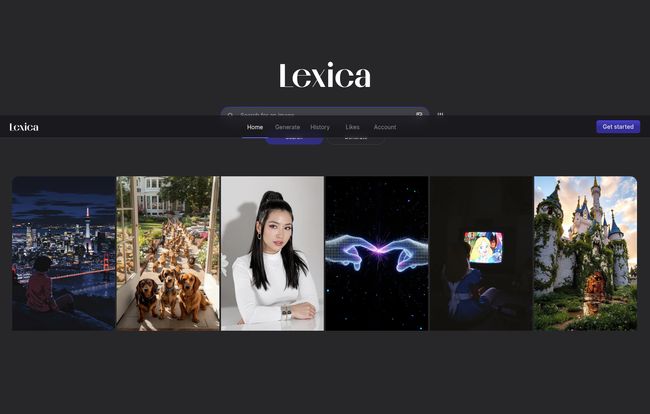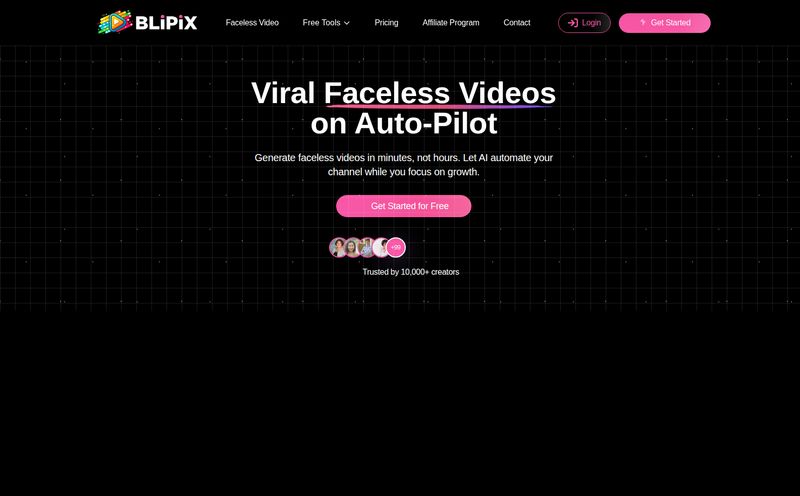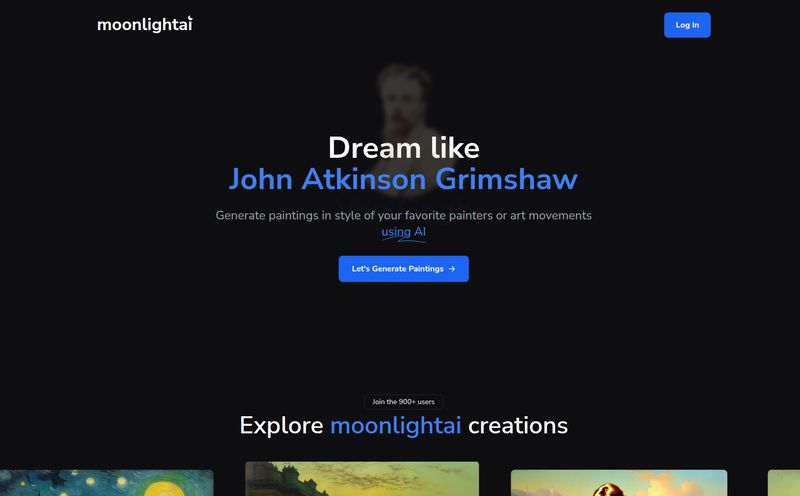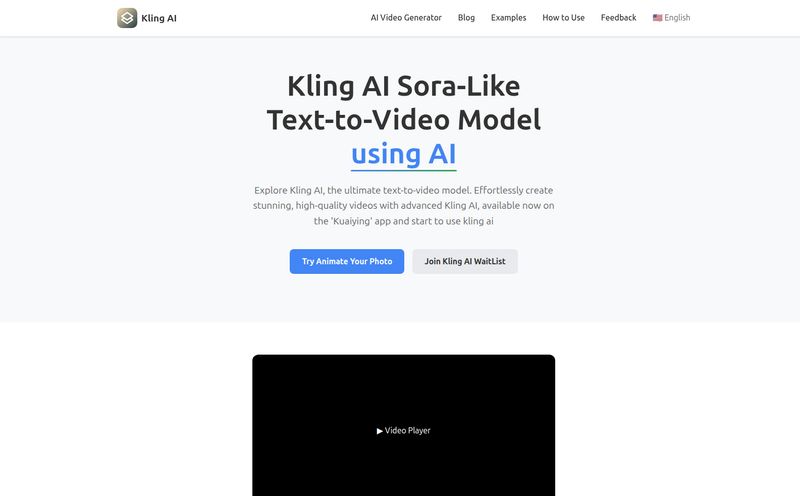If you're anything like me, you've spent more hours than you'd care to admit staring at a blank prompt box in some AI image tool, feeling a special kind of dread. You have an idea in your head, a beautiful, perfect image... but you have no idea what magic words will convince the AI to create it. It's the modern-day writer's block, but for visuals. You type “a dog wearing a hat” and get back a Lovecraftian horror with seven legs and a hat that’s melting into its fur. Fun, but not exactly what you were going for.
For months, my workflow was a chaotic mess of saving prompts in a text file, screenshotting cool images on Twitter for inspiration, and generally hoping for the best. Then I stumbled across Lexica. And honestly, it changed the game for me.
So, What Exactly Is Lexica, Anyway?
Here’s the thing. Calling Lexica just an “AI image generator” is like calling Google just a “list of websites.” It’s technically true, but it misses the entire point. Lexica is a Stable Diffusion search engine first, and a generator second. Imagine a massive, ever-growing library of millions of AI-generated images. Now, imagine that every single one of those images has a little tag on it showing you the exact prompt used to create it. That’s Lexica.
It’s like having Google Images for a universe that doesn't exist yet. You're not just searching for what's already been made; you're searching for the spells and incantations that brought those creations to life. It’s built on the incredible Stable Diffusion model, which is one of the powerhouses in the text-to-image world.
The Killer Feature: Search-First Inspiration
This search-first approach is, without a doubt, Lexica's secret weapon. It tackles the biggest hurdle in AI art creation head-on: the 'blank canvas' problem.
Taming the Wild West of Prompting
Let's say you want to create an image of a “cyberpunk samurai in a neon-lit alley.” You could type that into any generator and see what happens. Or… you could go to Lexica, search for that exact phrase, and instantly see hundreds of variations created by other people. You can see what worked, what didn’t, and which keywords they added to get that specific look. Oh, they added “cinematic lighting,” “art by Syd Mead,” and “unreal engine 5”? Interesting. You can literally click to copy their prompt, pop it into the generator, and use it as a starting point. It's not cheating; it's learning from a collective intelligence. It’s a cheat sheet for creativity.

Visit Lexica
A Never-Ending Idea Machine
Some days, I don’t even have a specific idea. I just go to the Lexica homepage and scroll. It’s like window shopping for concepts. A photorealistic dog portrait will be next to an abstract splash of color, which is next to a beautiful anime-style landscape. You see an image you love, you grab the prompt, and you start tinkering. This reverse-engineering process is so much more intuitive and, frankly, more fun than trying to build a masterpiece from scratch every single time.
Okay, But How Good Is the 'Generate' Part?
Fantastic, it's a great search engine. But can it actually make cool stuff? Yes, absolutely. The generator itself, Lexica Aperture v3.5, is clean, fast, and powerful. You get your main prompt box and a negative prompt box (for telling the AI what to avoid), which is critical for getting clean results. You can also upload an image to use as a base or inspiration, which is a really powerful feature for steering the AI in a specific direction.
The interface is refreshingly simple. There aren't a million confusing sliders and settings to tweak, which might be a drawback for super-advanced users, but for the 95% of us who just want to create amazing images without needing an engineering degree, it’s perfect.
The Good, The Bad, and The AI
No tool is perfect, right? Here’s my honest breakdown.
What I Absolutely Love
The inspiration is just endless. Having a searchable database of prompts completely demystifies the process of promptcraft. The user interface is clean, uncluttered and a joy to use. You can also see your full history and “like” images to save them for later, building your own personal inspiration library. The quality of the images you can generate is top-tier, easily rivalling some of the more complex tools out there.
A Few Things to Keep In Mind
Like any AI tool, the output quality is directly tied to your prompt quality. A vague prompt will give you a vague (or weird) image. It still takes a bit of trial and error. Also, because it's so powerful, there's always the potential for people to try and generate not-so-great stuff, which is a challenge for the entire industry, not just Lexica. Sometimes you'll get an image with six-fingered hands... but that's just the state of AI in 2024, folks. It's part of the charm, I guess?
Let’s Talk Money: Lexica's Pricing
This is often the make-or-break question. The great news is that Lexica has a very generous free plan. As of my writing this, here's the basic breakdown I found on their pricing page. But always check their site for the latest info!
| Plan | Generations/Month | Price (USD) |
|---|---|---|
| Free | 16 fast generations | $0 |
| Starter | 1,000 fast generations | $8/mo (billed annually) |
| Pro | 3,000 fast generations | $24/mo (billed annually) |
| Max | 7,000 fast generations | $48/mo (billed annually) |
The free tier is more than enough to get your feet wet and see if you like the workflow. The paid plans add more generations, allow for commercial use, and let you keep your generations private. For a professional or heavy user, the Starter plan is an absolute steal.
Final Thoughts: Is Lexica Right For You?
Look, the AI art space is crowded. You've got the Discord-based complexity of Midjourney, the technical freedom of running your own Stable Diffusion instance, and a dozen other web-based tools. So where does Lexica fit?
In my opinion, Lexica is for the creative who values speed and inspiration over infinite tweaking. It’s for the blogger who needs a unique featured image fast. It’s for the artist who has a creative block. It's for the beginner who feels overwhelmed by other platforms. It smooths out the roughest parts of the AI art process and makes it feel less like a technical challenge and more like a creative partnership.
It’s become my go-to, my first stop when I need a visual. And it’s the first tool I recommend to anyone who asks me where to start with text-to-image AI. Give the free plan a spin. I have a feeling you might just ditch your old workflow, too.
Frequently Asked Questions
-
What is Lexica?
Lexica is a web-based platform that functions as both a search engine for AI-generated art and a powerful text-to-image generator. It's built on the Stable Diffusion model and is unique because it allows you to search millions of images and see the exact prompts used to create them.
-
Is Lexica free to use?
Yes, Lexica has a free tier that offers a set number of fast image generations per month (currently 16, but check their site for updates). This is great for trying out the platform. They also offer paid subscription plans for more frequent users and for those who need a commercial license for their images.
-
What AI model does Lexica use?
Lexica uses its own fine-tuned version of Stable Diffusion. Their current primary model is called Lexica Aperture, which is optimized for producing high-quality and aesthetically pleasing images.
-
Can I use the images I generate for commercial purposes?
According to their terms, images generated on the free plan are under a Creative Commons Noncommercial license. To use your creations for commercial projects, you need to subscribe to one of their paid plans (Starter, Pro, or Max). Always check their official terms of service for the most current details.
-
How is Lexica different from Midjourney?
The main difference is the workflow. Midjourney primarily operates through Discord commands and is known for its highly stylized, artistic output. Lexica is a web-based tool with a primary focus on its search engine, allowing you to find prompts and inspiration before you generate. Lexica's interface is generally considered more straightforward and less intimidating for new users.



